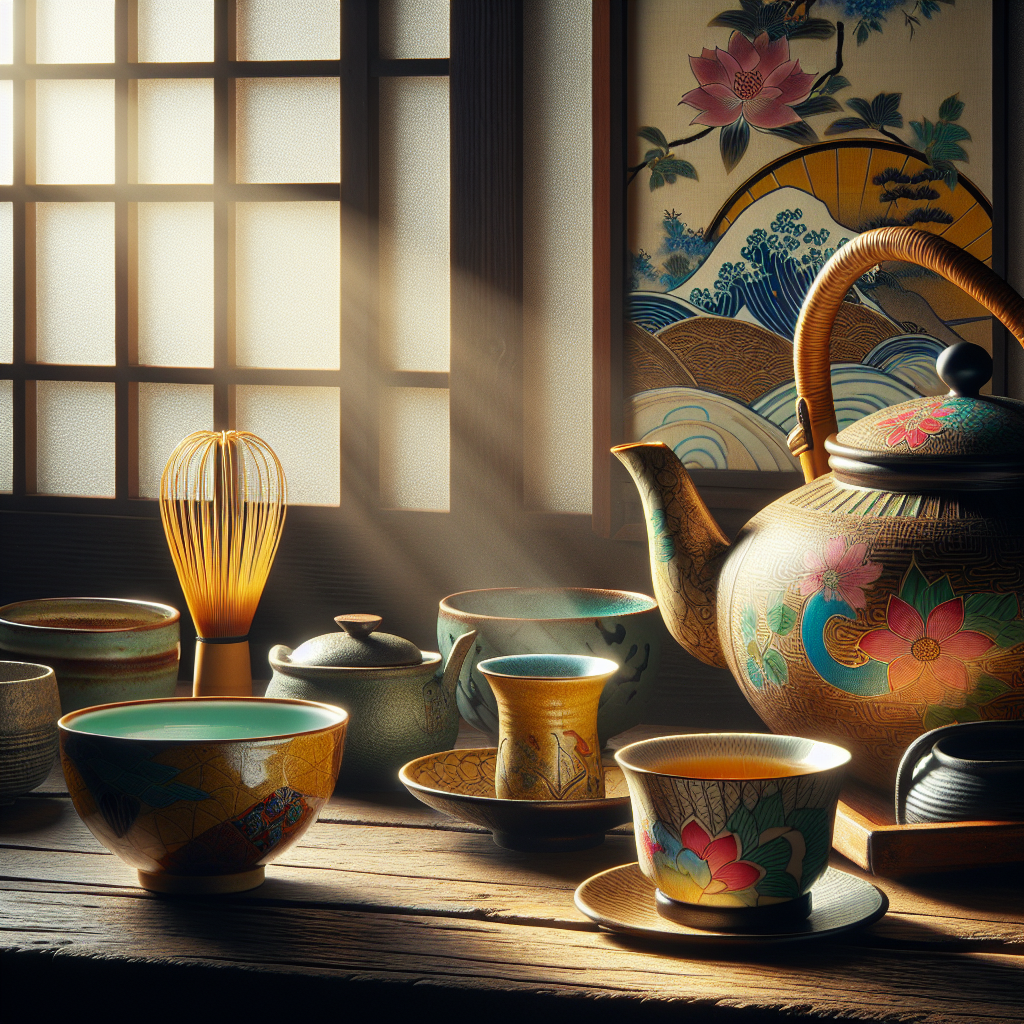Tales from the Tea Ceremony: A Journey into Japan’s Art of Tea
The Japanese tea ceremony, also known as “Chanoyu”, “Sado”, or “Chado”, which translates to “the Way of Tea”, is a ritualistic preparation, serving, and consumption of matcha, or powdered green tea. This tradition, deeply rooted in Zen Buddhism, is much more than a simple beverage serving. It’s a spiritual and philosophical journey, a form of meditation, and an art that celebrates the beauty in simplicity and the moment of togetherness. This article delves into the history, principles, and aesthetics of the tea ceremony, offering a glimpse into the profound cultural significance it holds in Japan.
Historical Brew
The tea ceremony’s origins can be traced back to the 9th century when tea was first introduced to Japan from China. However, the form of tea ceremony we are familiar with today began to take shape in the 16th century, primarily under the influence of Sen no Rikyū, considered the most significant historical figure in the tea ceremony. He perfected the way of tea and established the principles that govern the ceremony, emphasizing rustic simplicity, directness of approach, and honesty of self.
The Way of Tea
At its core, the Japanese tea ceremony is a manifestation of “Wabi-Sabi”, the aesthetic sensibility that finds beauty in imperfection, impermanence, and the modest and humble. It is also guided by the principles of harmony (和, wa), respect (敬, kei), purity (清, sei), and tranquility (寂, jaku).
A tea ceremony can vary in length, from a relatively short gathering (chakai) to a more elaborate and lengthy one (chaji), which includes a full-course kaiseki meal along with the tea. The ceremony takes place in a purpose-built tea room or a tea house in a tranquil garden setting. Every element, from the utensils to the seasonal scroll in the alcove (tokonoma), is carefully chosen to reflect the theme and season of the gathering.
The tea itself is prepared with precise movements and a clear, focused mind. The host meticulously cleans each utensil, from the bamboo whisk (chasen) to the tea bowl (chawan), in a prescribed order, demonstrating respect and care for the guests. The preparation and serving of the tea are considered an act of generosity and mindfulness.
Instruments of Harmony
The tools and utensils used in the tea ceremony are revered and are considered works of art. Each piece, crafted with utmost care, has its own history and significance. The tea bowl, in particular, holds a special place in the ceremony, with different shapes, colors, and styles used to complement the season or theme of the gathering.
The kettle (kama), water jar (mizusashi), tea caddy (natsume for thin tea, or chaire for thick tea), and bamboo scoop (chashaku) are among the other essential utensils, each playing a crucial role in the choreography of the ceremony.
A Journey Together
The tea ceremony is an intimate gathering where every gesture and item carries meaning, creating a bond between the host and the guests. It is a shared experience, a moment of purity and tranquility, away from the chaos of the outside world. The host’s preparations and the guests’ appreciation of the tea and the surroundings embody a mutual respect and a collective pursuit of harmony.
Modern Sips
While deeply traditional, the tea ceremony continues to evolve, embracing modern elements while staying true to its roots. Today, it is not only a way to preserve a cherished cultural heritage but also a source of inspiration for contemporary artists and an avenue for cultural exchange.
FAQs
Q: How long does a tea ceremony last?
A: The length of a tea ceremony can vary. A short ceremony (chakai) can last about 45 minutes, while a longer ceremony (chaji) that includes a meal may last up to four hours.
Q: Can anyone participate in a tea ceremony?
A: Yes, anyone interested in experiencing the tea ceremony is welcome to participate. There are many schools and tea houses that offer sessions for beginners and visitors.
Q: What should I wear to a tea ceremony?
A: It is recommended to wear modest attire that covers your shoulders and knees. Socks are also a must as you will be removing your shoes before entering the tea room.
Q: Do I need to know Japanese to participate in a tea ceremony?
A: While knowing Japanese can enhance the experience, it is not necessary. Many tea masters and hosts can conduct ceremonies in English or provide translations.
Q: Is matcha the only type of tea used in the ceremony?
A: Yes, matcha, powdered green tea, is the traditional and only type of tea used in the Japanese tea ceremony.
The Japanese tea ceremony is more than a cultural practice; it is a journey into the heart of Japan’s artistic and philosophical heritage. It invites us to slow down, appreciate the moment, and find beauty in simplicity and imperfection. Through this shared experience, we not only learn about an age-old tradition but also about mindfulness, respect, and the art of living harmoniously.
